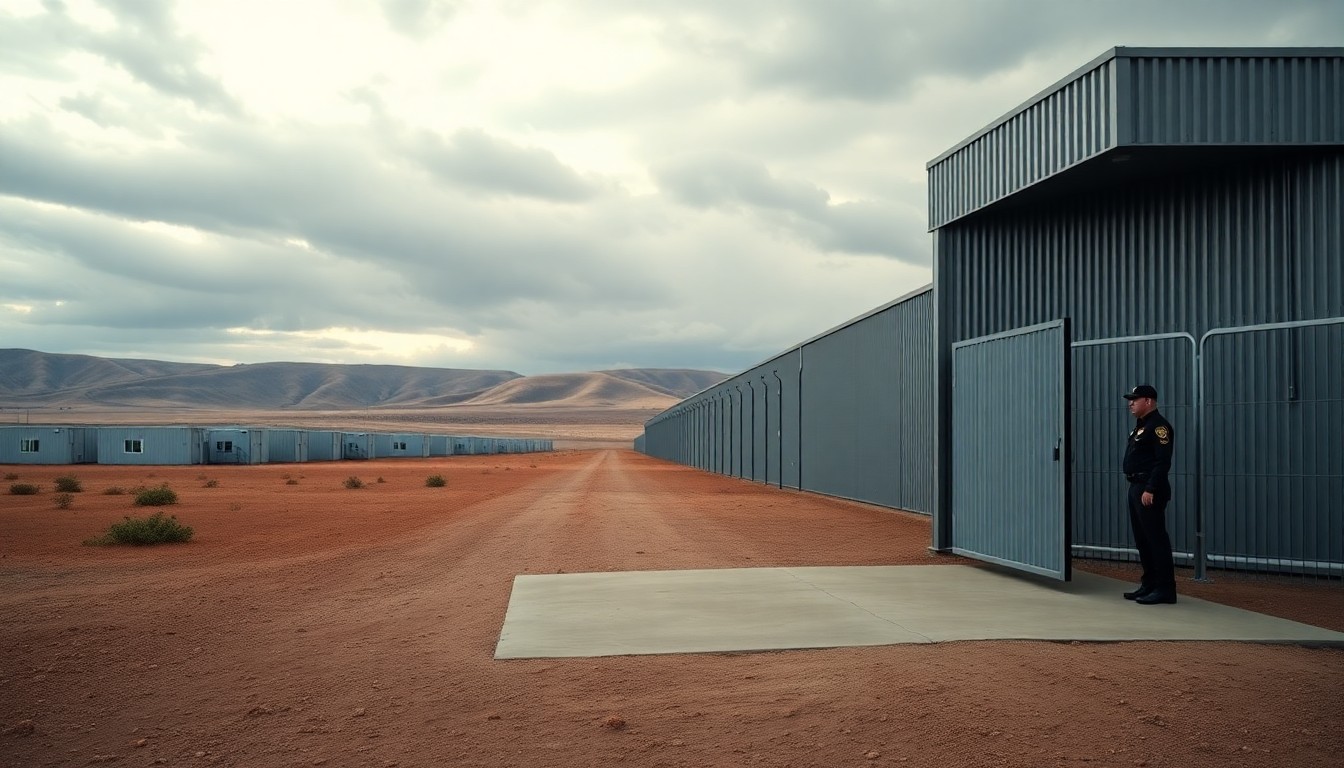Table of Contents
The landscape of immigration enforcement in the United States is changing rapidly, especially with the policies introduced during the Trump administration aimed at ramping up efforts against illegal immigration. For instance, the recent opening of new detention facilities, like one in southwest Nebraska, highlights the ongoing attempts to manage and control immigration issues across the nation. But what do these developments really mean for the future of immigration policy in the U.S.? Let’s dive in.
What’s Behind the Expansion of Detention Facilities?
The Department of Homeland Security (DHS) has been busy increasing its capacity to detain individuals who are in the country illegally. The latest facility, humorously nicknamed the “Cornhusker Clink,” is part of a larger initiative to add thousands of new beds nationwide for U.S. Immigration and Customs Enforcement (ICE). It joins the ranks of other uniquely named centers, such as “Alligator Alcatraz” in Florida and “Speedway Slammer” in Indiana, each designed to house individuals awaiting deportation or navigating deportation proceedings. But why the quirky names? Perhaps it’s a way to make a serious topic a bit more palatable.
This new facility is located about 200 miles from Nebraska’s state capital, Lincoln. It combines 200 new beds with an existing 280 beds at the Work Ethic Camp in McCook, operational since 2001. This strategic expansion signals the administration’s commitment to beefing up ICE’s overall capacity as part of a broader immigration enforcement strategy. But is this really the best approach?
Political Context: What’s Really Happening?
These changes aren’t happening in isolation; they are tied to a much broader political narrative where immigration remains a hot-button issue. DHS Secretary Kristi Noem has made it clear that this new facility will play a key role in removing “the worst of the worst” from the country. This statement highlights the administration’s focus on targeting individuals who are seen as public safety threats. As ICE adapts its strategies to the shifting political landscape, the expansion of detention facilities offers a peek into what the future might hold for immigration policy.
The funding for these facilities has come through legislative measures, including Trump’s “One Big Beautiful Bill,” which allocated significant resources for expanding ICE’s detention capabilities. This nationwide push to establish new facilities clearly reflects the administration’s tough stance on immigration enforcement, aiming to deter individuals from entering the country illegally. But does this aggressive approach really solve the underlying issues?
Looking Ahead: What’s Next?
As the U.S. grapples with its immigration policies, the expansion of detention facilities raises key questions about the future of immigration enforcement. While ICE arrests may be down, removals are reportedly on the rise. So, how effective will these new facilities be in achieving the administration’s goals? Concerns are growing that, without congressional backing, the current crackdown on illegal immigration could face significant hurdles.
Additionally, the establishment of facilities like the Cornhusker Clink invites scrutiny and comparisons to historical injustices. Advocacy groups, including the ACLU, have raised alarms about the treatment of detainees, drawing parallels to past internment camps. Is this really the direction we want to go as a society?
In conclusion, the ongoing developments in immigration enforcement, particularly the expansion of detention facilities, highlight a complex interplay of policy, politics, and public opinion. As we navigate this evolving landscape, it’s crucial to keep an eye on how these changes affect individuals in the immigration system and the broader societal context. What do you think the future holds for immigration in the U.S.?


